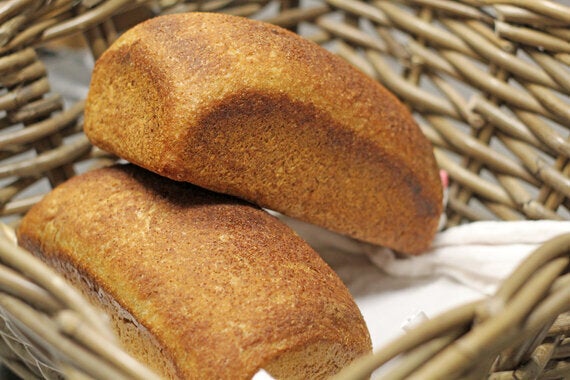
Photograph: Claudia Alice Photography
Teff is one of those super, super-grains it's up there with quinoa and sorghum, and has the added advantage that you can actually pronounce it correctly first time. No need to mumble to hide the fact that you're not 100% sure about if it's 'keen-wa' or 'kwi-noah', 'sore-jum' or 'sorg-hum'. It was recently included in Kate Quilton's Superfoods: The Real Story on Channel 4.
So, what makes it so super? Well, it's a brilliant combination of protein, fibre and minerals (including calcium and iron) and it just so happens to be gluten-free too. I first heard about it a few years ago at a gluten free baking class led by a nutritionist who made the startling pronouncement that they don't have osteoporosis in Ethiopia (which is where teff hales from). Last week I was lucky enough to attend the Food Exchange hosted by Enterprise Nation. One of the many topics that was raised was the growing interest in African food, and the need for consumer education regarding preparation, tastes and benefits. Teff is a tiny grain which comprises a quarter of Ethiopia's cereal production, and is usually made into a flatbread called Injera. Historically there's been an export ban in place which covered both the grain itself and flour made from Ethiopian teff. This meant that other enterprising countries have started to produce it for themselves.
The loaf pictured is made from a custom blend which includes two different types of teff flour, wholegrain organic millet and a couple of starches. The grain itself is sprinkled on top. So it's kind of a super-loaf, the kind that would look at a 'normal' whole grain wheat loaf with a sorrowful look in its bready-eyes thinking about all of the protein, calcium, fibre, vitamins and minerals that the poor old gluten loaf didn't have.
Gluten free baking is so much better when you focus on the ingredients that are included rather than sobbing about the lack of wheat/rye/barley. I'm guessing that after this build up, you're wondering what this Wonder loaf (I know that name's already been taken) actually tastes like?
Well, it's got a gently chewy crust, and a soft crumb with a delicate, slightly nutty taste. It doesn't crumble when you slice it, it doesn't have a dry mouth-feel. (It's almost as if this bread doesn't know that its gluten free??) It's a bit like rye bread but without the caraway. It's great for sandwiches and it's significantly more nutritious than its gluten-full counterparts. We use teff in bread, cakes and biscuits. On September 21st the World Bread Awards is being held in London.http://www.worldbreadawards.com/ There will probably be many different versions of teff bread in the gluten free section. Who knows even the 'normal' bakers may be brave enough to give it a try.